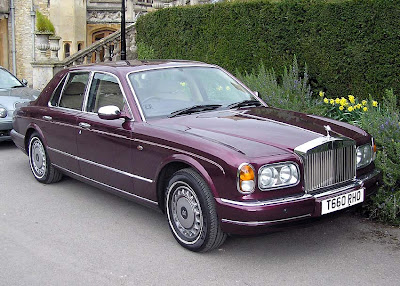The Rolls-Royce Silver Seraph, produced from 1998 to 2002, was first unveiled on March 3, 1998 at the Geneva Motor Show. The Silver Seraph replaced the Silver Spur, which ended production in 1997.
All Seraphs were hand-built at the Rolls-Royce factory in Crewe, England, which stopped making Rolls-Royce models in 2002 but continued with Bentley. The car had a base price of £155,175 in the UK and $220,695 in the US. It was second in cost and exclusivity only to the Rolls-Royce Corniche.
The Seraph was powered by a 5.4 L aluminium alloy BMW V12 engine and was operated via a 5-speed automatic transmission, making it the first twelve-cylinder Rolls-Royce since the 1939 Phantom III. Standard electronics included digital engine management, adaptive ride control and anti-lock brakes.
The body was 65 percent stiffer than that of its predecessor. Aside from the radiator grille, badges and wheels, the Rolls-Royce was externally identical to the contemporary Bentley Arnage, sharing both its platform and body shell. The exterior was available in one and two-tone finishes.
Inside, the Rolls-Royce Silver Seraph and the Bentley Arnage were similar but quite distinct from one another. In the Seraph, the gear selector was column-mounted and the gauges followed a traditional Rolls-Royce layout (for example, there was no tachometer). In both cars, the seats and dashboard were upholstered in Connolly Leather, with dashboard trim and folding picnic trays for rear passengers faced with glossy burl walnut veneer.
The Seraph was known for its relatively limited acceleration and comfortable handling, in comparison to the Arnage, which had a twin turbocharged BMW V8 and firmer suspension. However, the Seraph still had a top speed of 140 mph (230 km/h).
 RSS Feed
RSS Feed
 Tuesday, October 13, 2009 |
Tuesday, October 13, 2009 | 





0 comments:
Post a Comment